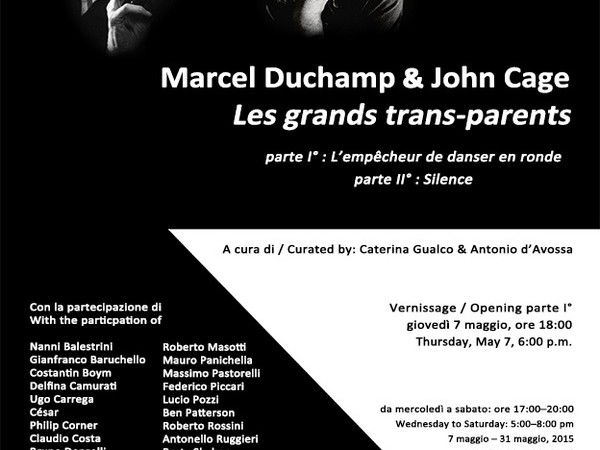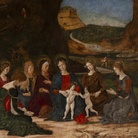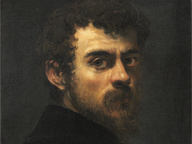Marcel Duchamp & John Cage. Les grands trans-parents

From 07 Maggio 2015 to 31 Maggio 2015
Venice
Place: Archivio Emily Harvey
Address: San Polo 387
Times: Wednesday to Saturday 05-08pm
Ticket price: free entrance
Telefono per informazioni: +39 041 5226727
E-Mail info: ehf@emilyharveyfoundation.org
Official site: http://www.emilyharveyfoundation.org
“The truth and importance of the work of an artist lie in the truth and importance of what it permits you to do—in the thoughts it helps you to think and in the actions it helps you to perform.”
Henry Martin
“Marcel Duchamp TU M’…emmerdes parce que tu as tout soulagé comme art, parce que tu as tout inventé comme art, parce que tu as tout fait passer comme art.”
Antonio d’Avossa
Paraphrasing Henry Martin, “Why Duchamp” (and “Why Cage”) today? Both have been universally recognized as the figures of the last century who most, and at one and the same time, both opened and closed a number of doors for art, and the literature on their contributions is so extensive as to leave little to be added, if not on the part of poets or enlightened minds, or, in short, of artists.
I’ll therefore limit myself to telling the story of how this show (these shows) have come into existence.
Three years ago, a Parisian friend, Jacqueline Sigaar, gave me a copy of Allan Miller’s film on John Cage. “I have nothing to say and I am saying it,” of which she was the co-producer. Marcel Duchamp was an important presence in this film, but, more than anything else, it was marked by the spirit that was shared by these two great men, their search for the new, their dizzying foray into all possible dimensions. In short, I fell in love with it and begin to look for an occasion on which to present it.
At first, there was the small idea of a show consisting only of documents, books, catalogues, and video, of which I have a fairly considerable collection, but things then things turned more complicated, and the project grew more ambitious. It was nearly, moreover, as though by chance (“I don’t search, I find,” said Picasso) that works for the exhibition began to appear. The first title that came to my mind was simply Les Grands Parents, which Antonio D’Avossa was then to transform into Les Grands Trans-Parents (Breton docet), for which Henry Martin, in turn, was later to suggest the subtitles. Both have contributed a text which I don’t hesitate to call “poetic.” Things, as I said, grew even more complex: poring through my memory and the enormous chaos of my archive, I discovered a series of works in which more contemporary artists make explicit reference to Duchamp and Cage. There were also others whom I asked to contribute a new work, and I found it quite exciting to see how many artists now look upon themselves as grandchildren of these Grands Trans-parents. My heartfelt thanks to all of them.
I must also express my gratitude to Antonio d’Avossa and Henry Martin as well as to all the other persons who have contributed to making this adventure possible: Piero Cavellini, Valeria Carrega, Enzo and Edda Gazzerro, Nanni Ghio, Carlo Palli, Mauro Panichella, Raccolta dei Campiani, Jacqueline Sigaar, Aldo Spinelli, Nicola Trentalance.
Caterina Gualco
February 2015
Henry Martin
“Marcel Duchamp TU M’…emmerdes parce que tu as tout soulagé comme art, parce que tu as tout inventé comme art, parce que tu as tout fait passer comme art.”
Antonio d’Avossa
Paraphrasing Henry Martin, “Why Duchamp” (and “Why Cage”) today? Both have been universally recognized as the figures of the last century who most, and at one and the same time, both opened and closed a number of doors for art, and the literature on their contributions is so extensive as to leave little to be added, if not on the part of poets or enlightened minds, or, in short, of artists.
I’ll therefore limit myself to telling the story of how this show (these shows) have come into existence.
Three years ago, a Parisian friend, Jacqueline Sigaar, gave me a copy of Allan Miller’s film on John Cage. “I have nothing to say and I am saying it,” of which she was the co-producer. Marcel Duchamp was an important presence in this film, but, more than anything else, it was marked by the spirit that was shared by these two great men, their search for the new, their dizzying foray into all possible dimensions. In short, I fell in love with it and begin to look for an occasion on which to present it.
At first, there was the small idea of a show consisting only of documents, books, catalogues, and video, of which I have a fairly considerable collection, but things then things turned more complicated, and the project grew more ambitious. It was nearly, moreover, as though by chance (“I don’t search, I find,” said Picasso) that works for the exhibition began to appear. The first title that came to my mind was simply Les Grands Parents, which Antonio D’Avossa was then to transform into Les Grands Trans-Parents (Breton docet), for which Henry Martin, in turn, was later to suggest the subtitles. Both have contributed a text which I don’t hesitate to call “poetic.” Things, as I said, grew even more complex: poring through my memory and the enormous chaos of my archive, I discovered a series of works in which more contemporary artists make explicit reference to Duchamp and Cage. There were also others whom I asked to contribute a new work, and I found it quite exciting to see how many artists now look upon themselves as grandchildren of these Grands Trans-parents. My heartfelt thanks to all of them.
I must also express my gratitude to Antonio d’Avossa and Henry Martin as well as to all the other persons who have contributed to making this adventure possible: Piero Cavellini, Valeria Carrega, Enzo and Edda Gazzerro, Nanni Ghio, Carlo Palli, Mauro Panichella, Raccolta dei Campiani, Jacqueline Sigaar, Aldo Spinelli, Nicola Trentalance.
Caterina Gualco
February 2015
SCARICA IL COMUNICATO IN PDF
COMMENTI

-
 Dal 20 dicembre 2024 al 04 maggio 2025
Fermo | Palazzo dei Priori
Dal 20 dicembre 2024 al 04 maggio 2025
Fermo | Palazzo dei Priori
-
 Dal 20 dicembre 2024 al 04 maggio 2024
Gorizia | Palazzo Attems Petzenstein
Dal 20 dicembre 2024 al 04 maggio 2024
Gorizia | Palazzo Attems Petzenstein
-
 Dal 18 dicembre 2024 al 18 dicembre 2024
Venezia | Museo Correr
Dal 18 dicembre 2024 al 18 dicembre 2024
Venezia | Museo Correr
-
 Dal 14 dicembre 2024 al 02 marzo 2025
Palermo | Palazzo Abatellis
Dal 14 dicembre 2024 al 02 marzo 2025
Palermo | Palazzo Abatellis
-
 Dal 12 dicembre 2024 al 23 febbraio 2025
Roma | Palazzo Altemps
Dal 12 dicembre 2024 al 23 febbraio 2025
Roma | Palazzo Altemps
-
 Dal 13 dicembre 2024 al 31 agosto 2025
Roma | Museo dell'Ara Pacis
Dal 13 dicembre 2024 al 31 agosto 2025
Roma | Museo dell'Ara Pacis


